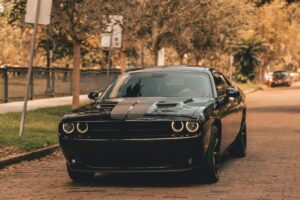The Utah sun beats down on your dashboard as you cruise along I-15, and suddenly you’re thinking about that sunroof you’ve always wanted. Maybe you’re eyeing a new vehicle with a factory sunroof, or perhaps you’re considering adding one to your current ride. The decision between factory-style and aftermarket options isn’t just about cutting a hole in your roof—it’s about understanding value, quality, and what works best for Utah’s unique climate.
Living in the Beehive State presents specific challenges for vehicle modifications. From scorching summer heat in St. George to heavy snow loads in Park City, your sunroof choice needs to withstand extreme conditions while maintaining your vehicle’s integrity.
Understanding Factory-Style Sunroofs
Factory-style sunroofs come integrated into vehicles during the manufacturing process. These installations benefit from original equipment manufacturer (OEM) standards, meaning they’re designed specifically for your vehicle model. The engineering team considers everything from structural integrity to drainage systems when incorporating these features.
When manufacturers install sunroofs, they reinforce the surrounding roof structure to maintain crash safety ratings. The glass used typically includes UV protection and heat-reduction technology—crucial features when you’re dealing with Utah’s 3,000+ hours of annual sunshine. Factory installations also integrate seamlessly with your vehicle’s electrical system, allowing controls through your existing dashboard interface.
The warranty coverage on factory sunroofs often extends through your vehicle’s bumper-to-bumper warranty period. This protection becomes invaluable if you encounter issues with motors, seals, or drainage systems. However, factory options limit you to what’s available at the time of purchase, and adding one after manufacturing isn’t possible without going the aftermarket route.
The Aftermarket Advantage
Aftermarket sunroofs offer flexibility that factory options can’t match. Whether you’re driving a 10-year-old Toyota Tacoma perfect for Moab adventures or a luxury sedan for downtown Salt Lake City commutes, aftermarket installers can typically accommodate your needs.
Professional aftermarket installers have perfected techniques for various vehicle types over decades of experience. They can offer options ranging from basic manual pop-up vents to elaborate panoramic installations that rival factory specifications. The customization possibilities extend beyond just the sunroof itself—you can coordinate the installation with other modifications like custom car seats in Salt Lake City to create a truly personalized driving experience.
Cost considerations often favor aftermarket installations. While a factory sunroof might add $1,000-$2,000 to a new vehicle’s price, aftermarket options can start as low as $400 for basic models, though professional installation adds to this cost. The ability to choose exactly when to add this feature also helps with budget planning, rather than being forced to decide during initial vehicle purchase.
Weather Considerations for Utah Drivers
Utah’s diverse climate demands special attention when choosing any sunroof option. The state experiences temperature swings from below zero to over 100 degrees Fahrenheit, sometimes within the same year. This thermal cycling tests seals, motors, and glass integrity more than in moderate climates.
Snow load presents another unique challenge. Areas like Alta receive over 500 inches of snow annually, creating significant weight on vehicle roofs. Factory sunroofs undergo extensive testing for these conditions, while aftermarket quality varies significantly between installers. Proper installation becomes critical—poor workmanship can lead to leaks during spring snowmelt or summer thunderstorms.
The high altitude also affects materials differently. UV radiation intensifies with elevation, potentially degrading seals and gaskets faster than at sea level. Quality installations use materials specifically rated for high-altitude conditions. Salt Lake City sits at 4,226 feet, while ski resorts reach above 10,000 feet—your sunroof needs to perform reliably across this range.
Installation Quality Matters
The difference between professional and amateur installation can’t be overstated. Professional installers understand vehicle structural dynamics and how modifications affect everything from aerodynamics to crash safety. They use specialized tools to ensure precise cuts and proper sealing.
Proper installation involves more than just cutting metal and installing glass. Professionals must reroute interior headliners, ensure proper drainage channels, integrate electrical systems, and maintain structural integrity. They also understand local building codes and regulations—yes, Utah has specific requirements for vehicle modifications that affect safety inspections.
According to the National Highway Traffic Safety Administration, improperly installed aftermarket sunroofs can compromise roof strength by up to 50% in rollover scenarios. This statistic underscores why choosing certified installers matters more than saving a few hundred dollars.
Value and Resale Considerations
Your sunroof choice impacts your vehicle’s future value differently depending on the option selected. Factory sunroofs generally enhance resale value, particularly in Utah’s outdoor-enthusiast market. Buyers trust factory installations and appreciate the warranty coverage transfer.
Aftermarket sunroofs present a mixed bag for resale. High-quality professional installations from recognized shops can maintain or even increase value. However, poor installations or DIY attempts often decrease value significantly. Potential buyers worry about leaks, rust, and structural compromise from substandard work.
The local market also influences value retention. Utah buyers often prioritize functionality over luxury features. A well-installed sunroof that enhances outdoor experiences—think stargazing in the desert or enjoying mountain views—resonates with local buyers more than purely aesthetic additions.
Making Your Decision
Several factors should guide your factory versus aftermarket decision. First, timing matters. If you’re purchasing a new vehicle, factory options provide peace of mind and integrated functionality. The cost difference becomes less significant when rolled into financing, and you avoid any warranty concerns.
For existing vehicles, aftermarket becomes your only option. Here, quality trumps price every time. Research installers thoroughly, checking certifications, insurance, and previous customer experiences. Ask about warranty coverage—reputable installers offer comprehensive protection for their work.
Consider your vehicle’s age and your ownership timeline. Installing an expensive sunroof in a high-mileage vehicle might not make financial sense. Conversely, if you plan to keep your vehicle long-term, the enjoyment factor might outweigh pure financial calculations.
Your lifestyle influences the decision too. Frequent canyon drives, camping trips, or simple daily commutes under Utah’s blue skies all benefit from sunroof access. Match the investment level to your usage expectations.
Professional Installation Standards
Whether choosing factory or aftermarket, understanding installation standards helps you make informed decisions. Professional installers should provide detailed quotes outlining all work performed. This includes structural reinforcement, drainage system installation, electrical integration, and finishing work.
Quality installations use OEM-equivalent or better materials. Seals should withstand temperature extremes, glass should meet safety standards, and motors should carry adequate warranties. Installers should also explain maintenance requirements—sunroofs need regular cleaning and seal conditioning to perform optimally in Utah’s climate.
The installation shop matters as much as the sunroof itself. Established shops with dedicated installation bays, proper tools, and experienced technicians deliver consistently better results. They also maintain relationships with parts suppliers, ensuring access to quality components and warranty support.
Working with shops that offer comprehensive services, including interior customization options, allows you to coordinate multiple upgrades efficiently. This approach often yields better overall results than piecemeal modifications.
Long-Term Ownership Experience
Living with a sunroof in Utah requires understanding maintenance needs. Regular cleaning prevents drainage channel blockages that cause interior leaks. Seasonal seal inspections catch deterioration before problems develop. Motor lubrication ensures smooth operation despite temperature extremes.
Factory sunroofs typically require less owner maintenance due to superior initial quality. However, when problems arise, repairs often cost more due to OEM part requirements. Aftermarket sunroofs might need more frequent attention but often allow for easier, less expensive repairs.
Consider developing a relationship with your installer or dealer service department. Regular professional inspections catch issues early, preventing costly water damage or motor failures. This preventive approach proves especially important given Utah’s weather extremes.
The daily enjoyment factor often surprises new sunroof owners. Whether it’s catching morning light during Salt Lake Valley inversions or enjoying clear night skies in southern Utah, sunroofs enhance the driving experience beyond initial expectations. This satisfaction factor should weigh into your decision-making process alongside practical considerations.
Frequently Asked Questions
How much does it typically cost to install an aftermarket sunroof in Utah?
Professional aftermarket sunroof installation in Utah ranges from $800 to $2,500 depending on the type and vehicle. Basic manual pop-up versions start around $800 installed, while electric sliding sunroofs with express features can reach $2,500. Panoramic options exceed $3,000. Always get multiple quotes from certified installers.
Will adding an aftermarket sunroof void my vehicle warranty?
Under the Magnuson-Moss Warranty Act, dealers cannot void your entire warranty for aftermarket modifications. However, if the sunroof installation causes damage, related repairs might not be covered. For example, if poor installation leads to water damage in electrical systems, those specific repairs could be denied. Document professional installation to protect yourself.
What’s the best sunroof type for Utah’s climate?
Sliding glass sunroofs with integrated sunshades work best for Utah’s variable climate. The sunshade blocks intense summer sun while the sliding design handles snow loads better than pop-up styles. Look for installations using tempered glass with UV coating and reinforced seals rated for temperature extremes from -20°F to 120°F.
How long does professional sunroof installation take?
Professional installation typically requires 4-8 hours depending on complexity and vehicle type. Basic installations might complete in half a day, while panoramic sunroofs or vehicles requiring extensive reinforcement can take a full day. Quality installers won’t rush the process—proper installation takes time to ensure lasting results.
Can I install a sunroof in a leased vehicle?
Most lease agreements prohibit permanent modifications like sunroof installation. Even if technically allowed, you’d likely face excess wear charges at lease end. The modification doesn’t add value from the leasing company’s perspective and might actually decrease it. Consider factory sunroof options when initially leasing or wait until purchasing the vehicle.



